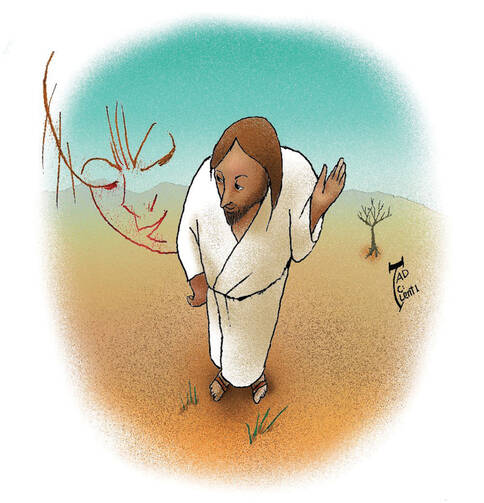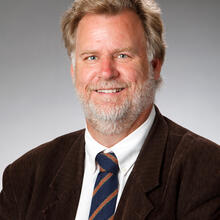Today’s Gospel: Jesus in the Desert
The Second Vatican Council’s “Constitution on the Sacred Liturgy” outlines the two essential features of Lent. Christians are to recall or to prepare for “the celebration of Christian Initiation,” and they are to participate in penance which “disposes the faithful…to celebrate the Paschal Mystery” (No. 109). In stressing the need for penance, by various spiritual disciplines and ascetic acts, the council fathers understood that the goal of all these acts was to lead to “the detestation of sin as an offense against God.” Penance, however, is not only “internal and individual, but also external and social,” a corporate activity of the gathered people of God (No. 110).
Lent is the time when the church once again looks to the model of Jesus Christ as we turn with renewed vigor from the subtle snares of sin. As the people of Israel recalled their time of redemption, when God freed them through the Passover, and their subsequent wandering in the desert prior to entering the Promised Land, so we recall Christ aligning himself by baptism in solidarity with sinful humanity, his 40-day period of temptation in the wilderness and his conquering of sin in order to bring us to God’s kingdom.
If we are to align ourselves spiritually in solidarity with Jesus, conversion is vital, for conversion is the lifeblood of repentance and the heartbeat of holiness. This requires our own personal spiritual acts of penance, but also actions with and on behalf of others, in the church and outside of the church, such as prayer for all those in need of conversion from sin. Jesus’ own battle with evil was not just a personal battle but a battle for the salvation of all humankind.
Jesus was tempted by the devil after his baptism, which is why we recall our own baptismal graces during Lent. Luke describes Jesus as “full of the Holy Spirit” when he goes to the desert; indeed, he is led there by the Spirit. So, too, we must enter Lent “full of the Holy Spirit,” prepared to withstand our own temptations and confront our sins filled with spiritual vigor.
The temptation of Jesus is mysterious, but as God made flesh he engaged in a number of spiritual disciplines to aid in his battle against evil that are models for us. In Luke, the temptations of the devil come after Jesus engaged in fasting, when he “ate nothing at all during those days.” Ancient Christian monastics pointed to the period after deep spiritual engagement as a time when the devil would strike. We need to fear the traps of sin and evil not simply when we feel spiritual absence but especially when we feel that we have become spiritually aware and mature.
Jesus thwarts temptation by relying on the word of God. When the evil one says to Jesus, “If you are the Son of God, command this stone to become a loaf of bread,” Jesus answers by citing Dt 8:3: “One does not live by bread alone.” When the devil offers Jesus all the kingdoms of the world if only he would worship him, Jesus rebuffs him with Dt 6:13: “Worship the Lord your God, and serve only him.” Finally, when the devil challenges Jesus to show his dependence upon God by testing his faith that God would save him, Jesus cites Dt 6:16: “Do not put the Lord your God to the test.”
Scripture is a bulwark against evil and essential for spiritual growth and conversion during Lent, but the devil also cites God’s word to Jesus in Luke’s temptation narrative. This is why the corporate element of Lent is so essential, that we come together as church to support one another in our spiritual practices, like Bible study and fasting, by worshiping together, by praying for one another and by turning our hearts to the perfect model, Jesus Christ. Even the best of spiritual practices can become temptations to support our own desires or needs, or to turn us away from God. For true conversion, we must allow holiness to be a support for us as we turn toward God together.
This article also appeared in print, under the headline “God Alone ,” in the February 8, 2016, issue.








